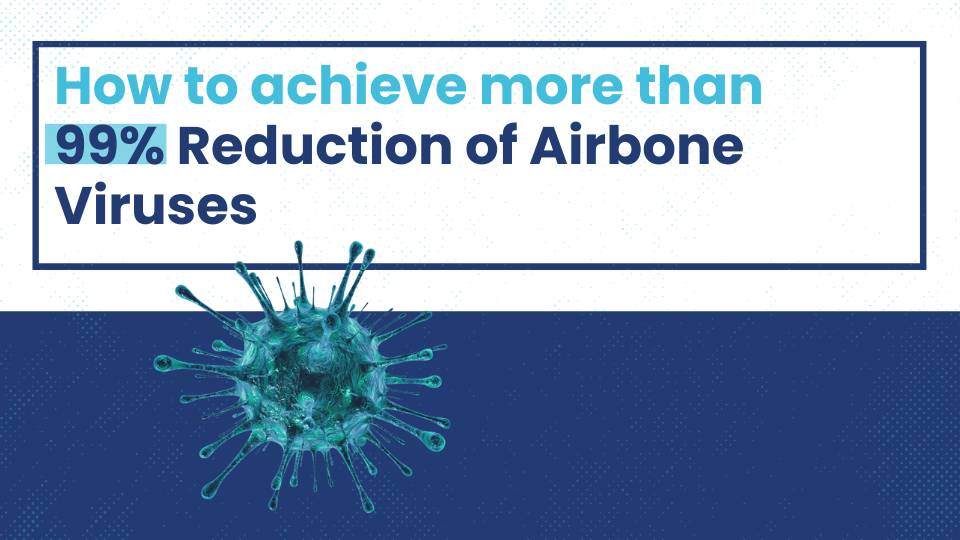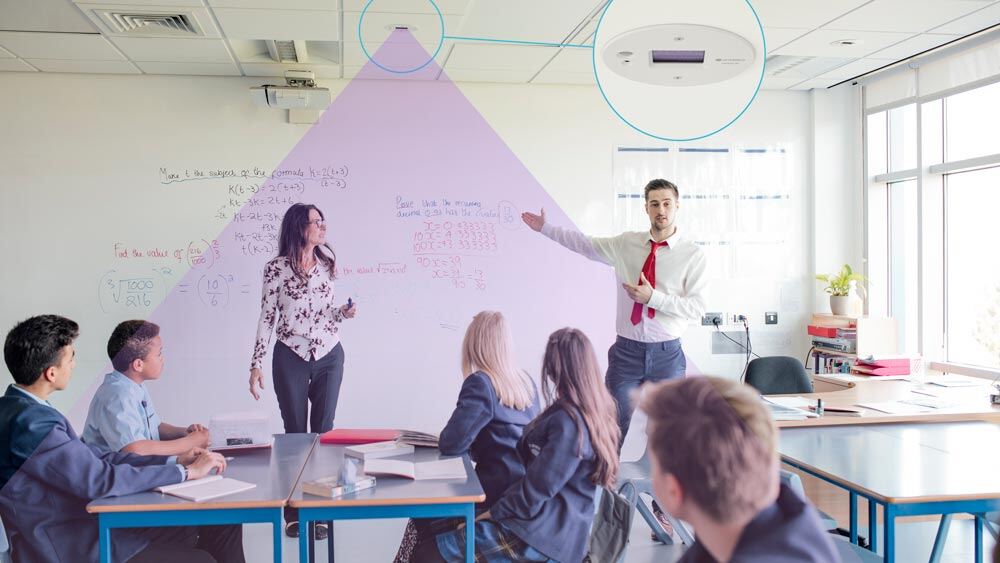1 min read
Eliminate Airborne Viruses in Occupied Rooms Using Far-UVC Technology
Emilie Hage Mogensen
:
24 Jul, 2024

A recent study published in Scientific Reports bridges the gap between laboratory benchtop studies and the real-world efficacy of Far-UVC light, demonstrating how Far-UVC virtually eliminates airborne viruses in occupied rooms.
More Than 99% Reduction of Airborne Viruses in Occupied Room
The study, conducted by Buonanno et al. at Columbia University, aimed to quantify the reduction of an airborne virus using Far-UVC light at 222 nm installed in the ceiling in a real-world, occupied work environment. The findings were nothing short of impressive: Far-UVC light reduced airborne infectious viruses by more than 99%. This reduction aligns with previous studies conducted in a room-sized bioaerosol chamber, suggesting that Far-UVC light is even more effective in larger, real-world settings than in laboratory conditions.

Inactivation of Influenza and Coronavirus
The researchers selected a conservative surrogate virus harder to inactivate using Far-UVC than more dangerous airborne viruses. Therefore, the study underscores that Far-UVC would be efficient at protecting people against disease-causing airborne threats such as influenza and coronavirus.
Equivalent Air Changes per Hour
To compare Far-UVC to conventional ventilation, the researchers calculated the number of equivalent air changes per hour (eACH) based on their findings. The result was 1480 eACH, indicating that Far-UVC provided far more protection against airborne viruses than any ventilation system could achieve.
Efficacy and Human Safety of Far-UVC – Proven by Science
Far-UVC is absorbed by proteins in the outermost skin and eyes, making it safe for human exposure. Critical voices against Far-UVC light often claim that the technology is ineffective due to the low power output of Far-UVC light sources compared to conventional UVC lamps. However, scientific studies speak for themselves, demonstrating Far-UVC’s ability to combine both human safety and germicidal efficacy.
The Broader Impact of Air Disinfection
The ability to significantly reduce airborne viruses in occupied spaces has profound implications for public health. Far-UVC technology can be deployed in various high-traffic indoor areas including hospitals, offices, and public transportation systems. By continuously inactivating airborne pathogens, this technology can help prevent the spread of diseases, offering an additional layer of protection alongside traditional methods such as vaccination and mechanical cleaning. Far-UVC can potentially be our tool against the next epidemic or pandemic.
Get all the latest Far-UVC news in your inbox
 UV222™
UV222™ UV222 Linear
UV222 Linear UV222 Downlight
UV222 Downlight Vertex 222
Vertex 222.png) UV222 Pendant
UV222 Pendant.png) UV222 Booth
UV222 Booth.png) UV222 Step-On
UV222 Step-On.png) UV222 Cleanroom Downlight
UV222 Cleanroom Downlight UV222 Dual Downlight 60x60
UV222 Dual Downlight 60x60 UV222 Material Airlock
UV222 Material Airlock UV222 Ambulance
UV222 Ambulance UV222 Compact
UV222 Compact UV222 Industrial
UV222 Industrial

.jpg)


.jpg)
.jpg)

.jpg)
.jpg)